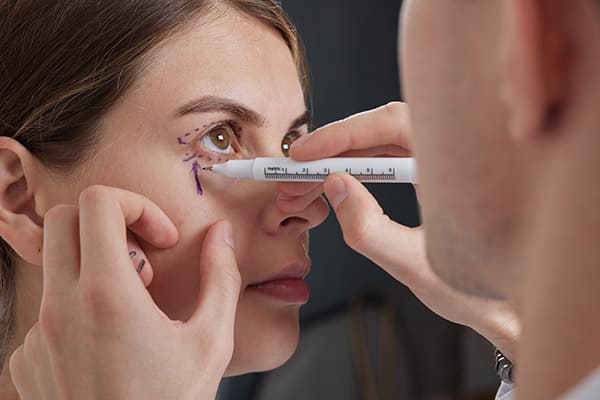Lower Eyelid Blepharoplasty

Changes to the lower eyelid are also common as we age — they often result in a tired, aged or puffy under-eye appearance. These “bags” under your eyes happen as a result of protruding fat that was previously hidden by toned tissue. Other contributing factors include loss of skin elasticity and natural tone over time. While most changes to the lower eyelid can take decades to appear, some people can experience under-eye puffiness earlier in life, particularly if they have a family trait.
Lower eyelid blepharoplasty can address each or all of these signs of aging in the under-eye area. Prolapsed fat can be approached in one of two ways — internally, by making a small incision on the inner surface of the eyelid (transconjunctival), or externally, by making an incision below the lash line (transcutaneous). The external incision is made when a significant amount of skin needs to be tightened in the eye area.
Before fat or skin is removed from the lower eyelid, it’s important to examine the lower eyelid for any indication of “looseness,” as it’s possible for the already lax lower eyelid to pull down even further during the healing process. If lower eyelid laxity is present prior to surgery, an additional step to tighten the lower eyelid is recommended. Dr. North’s training allows her to perform skin tightening techniques that give your eyelids a natural, smooth appearance. After lower eyelid blepharoplasty, excess fat and skin are removed and the position and contour of the lower eyelid is preserved.
If lower eyelid puffiness is mild, less invasive treatments such as filler or Botox are recommended instead of surgery. Lower eyelid blepharoplasty is typically reserved for people who would not experience optimal results from these less invasive options. Candidates for lower eyelid blepharoplasty also commonly benefit from upper eyelid blepharoplasty.




